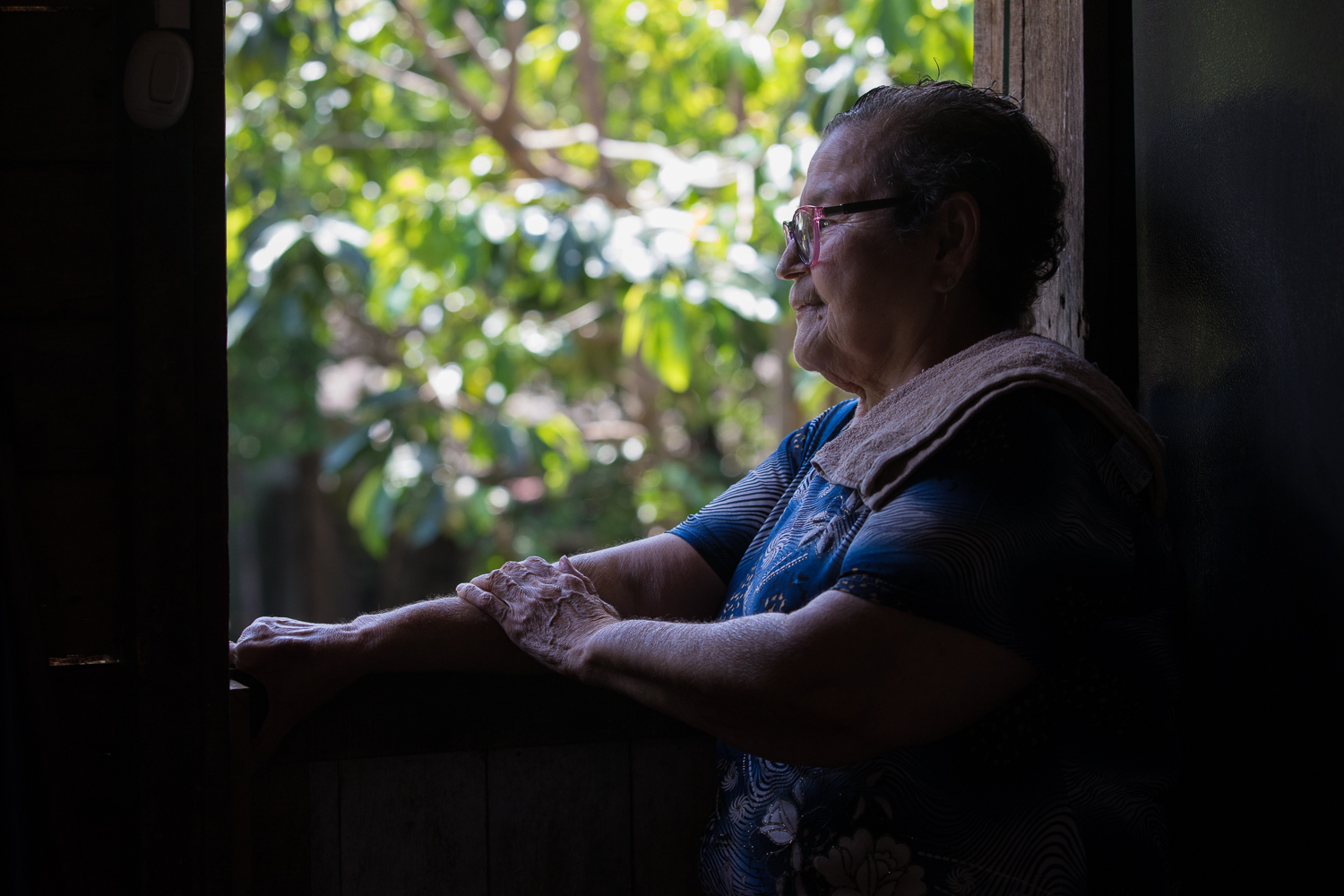Doña María Elena Quirós is 68 years old and loves to watch videos of cats and dogs on Tik Tok. They make her laugh. She spends her days at her home in Siquirres enjoying the videos, chatting with family and friends in person or on social media, and enjoying her pets.
María Elena has had eight children, labored as a domestic worker, and overcome painful illnesses that are difficult to recover from. One of those is breast cancer, which was detected and treated between March 2018 and early 2020.
“We never thought my mother was going to get breast cancer,” says her 47-year-old son Oldemar Valladares Quirós. “For me, she is a fighter.”
The early diagnosis of María Elena’s cancer occurred at an organized breast cancer screening effort that has operated since 2017 through a public-private alliance under the name of ‘ALSALUS: Alianza por su salud’ (Alliance for Your Health). Through this alliance, the Costa Rican Social Security Fund (CCSS or Caja), Hospital Clínica Bíblica, Automercado and Fundación Aliarse send a mobile mammography machine to communities where women would have to travel more than 50 km, and or more than two hours, to be able to attend a routine mammogram appointment.
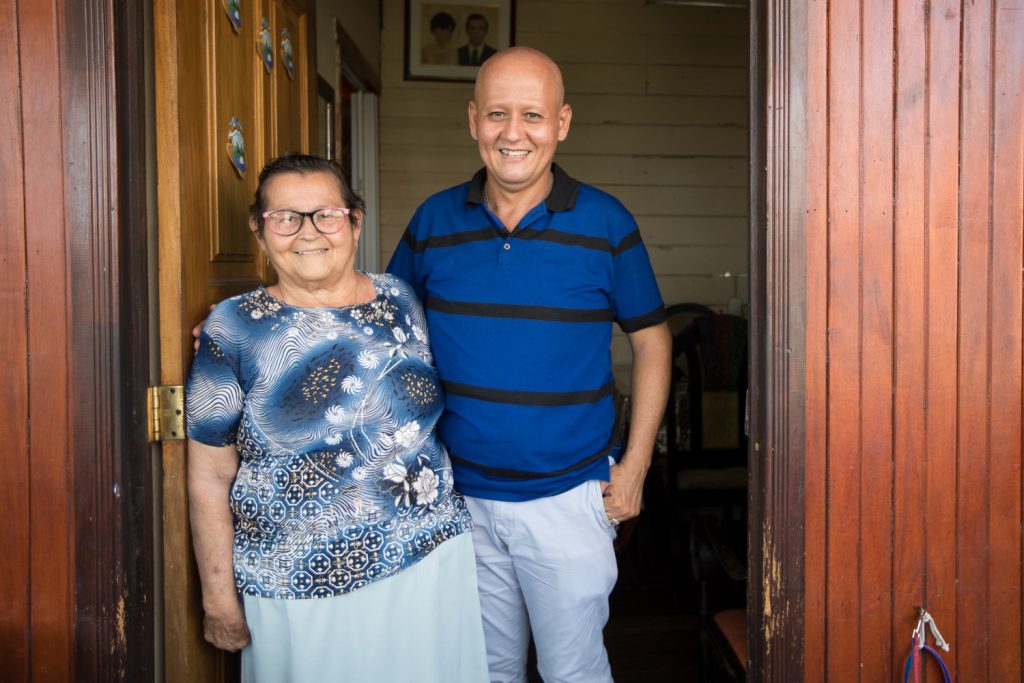
“On the subject of breast cancer, we cannot tell you, as in lung cancer, ‘Stop smoking.’ We cannot give you a vaccine like the human papillomavirus,” says Angie Pereira Calvo, an expert in diagnostic imaging and who has operated the ALSALUS mammography machine since 2012. “Being a woman, having hormones, is a risk factor.”
All oncology experts consulted agree that early detection of breast cancer can be done only through mammograms.
“From a cost-benefit point of view, it is still the method to use, because it is very cheap,” says Dr. Efraín Cambronero, an oncological surgeon who practices in the private sector. “As long as we don’t have anything more sensitive and cheap, we have to do a mammogram.”
Despite this, and although the Caja says that it has enough equipment to ensure full coverage of the women in Costa Rica who are due for control mammograms, Costa Rica has never undertaken a population-wide screening: that is, mammograms are scheduled if a woman asks for an appointment, or if she goes to the Caja for another appointment and her doctor sends her for an appointment. There has never been a proactive effort to get the target population into mammography rooms every two years. Not until 2017 did a pilot screening plan get started in 10 specific Health Areas, in hopes of eventually scaling the pilot up to a nationwide screening operation.
But calling women in for appointments is only part of the problem. Another obstacle is the effort, time and money required for many women, especially those who live outside the metropolitan area, to reach the location of their mammograms.
María Elena had to have her follow-up mammogram done on September 6th of this year at the Calderón Guardia Hospital in San José, but she missed her appointment. The trip represents an economic and physical effort for her and her family—the trip lasts at least three hours each way by bus— but also, on those dates, heavy rains occurred in the Caribbean that closed roads and made her trip to the capital very risky. She has not yet rescheduled her appointment.
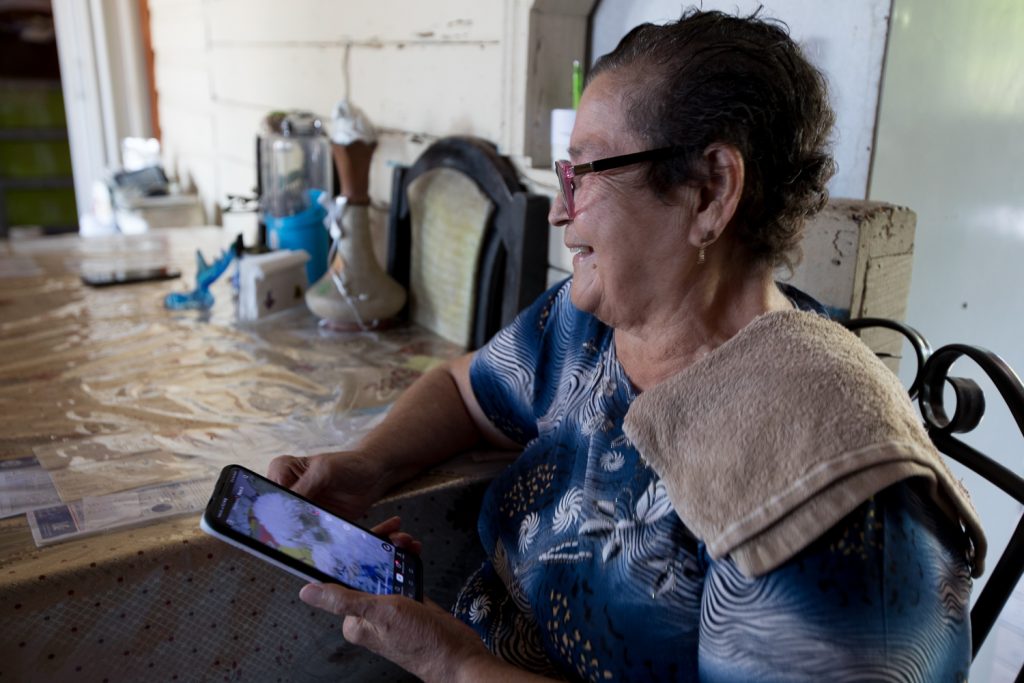
Early detection of breast cancer in Costa Rica
Somewhere between March and July 2018, when María Elena went to have her mammogram done at the mobile mammography unit that visited Siquirres, she was happy that she did not have to travel to the Dr. Tony Facio Hospital in Limón for the routine examination. However , when her mammogram showed alterations, she still had to make the two-hour bus trip to visit the hospital, unleashing a series of steps within the Caja to diagnose and treat her cancer.
“They called me from the CAIS [Comprehensive Health Care Center] to tell me that some lumps had been noted, but nothing hurt. I didn’t feel anything,” says María Elena.
After that call, María Elena went to Limón for an ultrasound. The ultrasound result generated a referral to the Calderón Guardia Hospital in San José for a biopsy, which indicated that she had malignant tumors. In September 2019, a year and a half after her mammogram, María Elena received the news about her cancer from a Calderón Guardia doctor, accompanied by her son Oldemar. By February 2020, she had already been operated on and the tumors had been removed.
As explained by Dr. Maureen Fonseca, coordinator of the Caja’s breast clinics, since 2014, the Costa Rican Public Health Ministry’s regulations have called for every woman between 45 and 69 years old to have a mammogram every two years. This population consists of approximately 650,000 women, according to data from the National Institute of Statistics and Census (INEC).

“From the institution we promote getting a mammogram every two years, not only because of the regulation, but also because the institution is capable of doing them,” says Dr. Maureen. She explains that today the Caja has 39 mammography machines, each capable of performing 10,000 mammograms a year. According to the doctor, this allows the Caja to cover the entire target population. However, being able to carry out a population screening requires much more than the instruments: it also implies organization within the health system to not only offer the service, but also set up and follow up on appointments, ensuring that women of the correct age get checked every two years.
In other words, women over 45 years of age and under 70 who visit a health center for any reason, be it an EBAIS (Basic Comprehensive Health Care Team), a clinic or a hospital, will receive a referral to undergo a mammogram at the closest location that has the equipment, as soon as the system allows. But if a woman never attends any of these care centers she will not be contacted for a mammogram.
There’s one exception, Dr. Maureen explains: those 10 health areas where an organized screening program has been carried out since 2017. In the communities assigned to those 10 areas, women receive a call and a specific invitation for a mammogram appointment.
Five of these Health Areas (Talamanca, Siquirres, Los Santos, Horquestas-Rio Frío, and Puerto Viejo de Sarapiquí) are also beneficiaries of the ALSALUS public-private partnership project.
The other Health Areas where the pilot plan is carried out are Tibas-Uruca-Merced, Carpio-Leon XIX, Goicoechea 2, Tibás and Moravia. Women from these communities are referred to mammography units at the Dr. Clorito Picado Clinic and the Dr. Ricardo Jiménez Núñez Clinic.
“We started in 2017 with the plan of doing a first two-year cycle [in those 10 areas] to see how the work developed in those Health Areas, and then incorporate more Health Areas for a second cycle,” says Dr. Maureen. However, she explains that this program was interrupted by the pandemic. Not only have plans to incorporate more health areas been put on hold, but the total number of mammograms performed has dropped.
“In 2019 the Caja did 160,000 mammograms, and in 2020 we did just over 108,000 mammograms,” she says; this represents a decrease of just over 30%. And although El Colectivo 506 could not collect data on how many mammograms were performed in the private sector in that same year, the number shows that the Caja is performing only 50% of the mammograms that must occur annually.
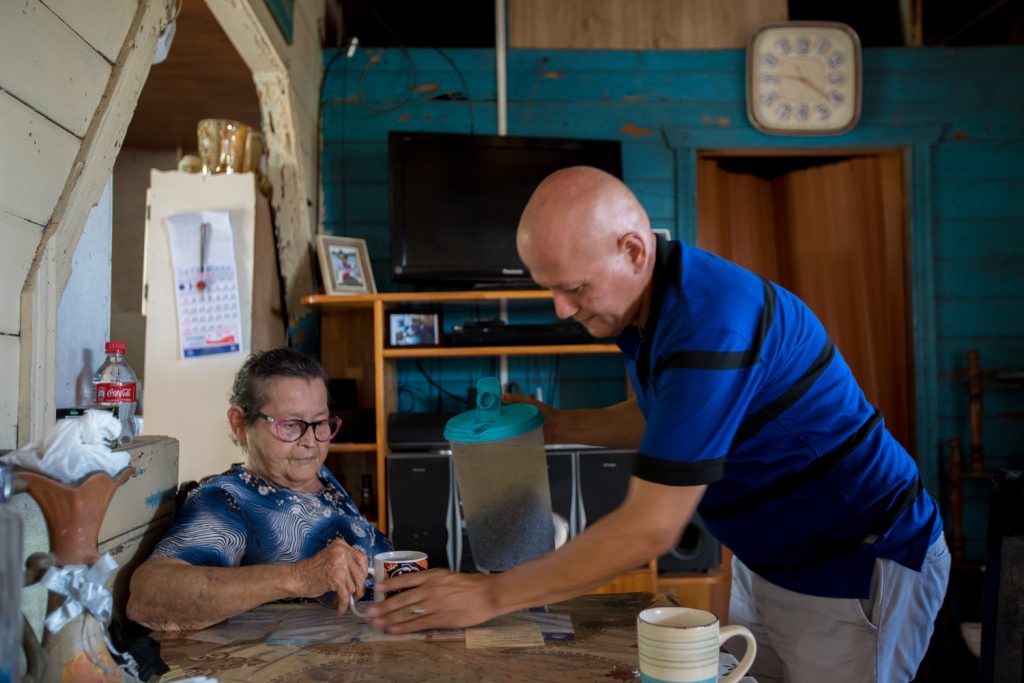
Another problem that exists in these early detection programs is the time that elapses between the mammogram and the moment of diagnosing breast cancer. For example, María Elena waited more than a year after having her mammogram with ALSALUS to be diagnosed with breast cancer.
The decrease in the number of mammograms performed at the Caja due to COVID had a positive effect on those waiting times.
“The time between taking and reading [the mammogram] has been shortened,” explains Dr. Maureen, since this reading must be performed by a doctor specialized in radiology. “And it allowed us to update the reading of mammography studies.”
Similarly, the other steps in the diagnostic process have seen a reduction in waiting times because fewer women have had mammograms.
“In 2019 we had a 111-day wait for a person with an altered mammogram to have a biopsy,” says Dr. Maureen. “In 2020 we go to 43 days and for this first quarter [of 2021] the time from when the mammogram is altered until the biopsy is 15 days.”
An alliance that takes the bull by the horns
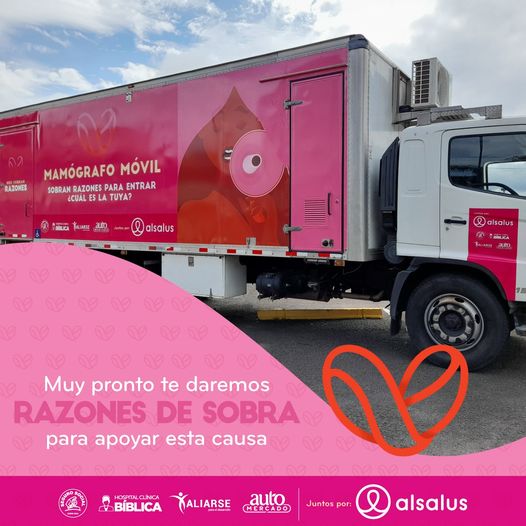
The mobile mammography unit that allowed María Elena to have a mammogram just minutes from her home has operated in different versions and with different allies since 2012.
According to Danielle Jean-Pierre, Director of Programs of the Aliarse Foundation, which acts as the technical secretariat of the alliance, the different versions of this alliance have performed more than 43,500 mammograms since 2012 with this mobile approach. The alliance was known as Lazos until 2017.
Since 2017, ALSALUS has performed more than 13,000 mammograms in the agreed Health Areas for the Caja’s organized screening program. All these mammograms have been read by a specialized doctor who works at the Hospital Clínica Bíblica. This doctor has subsequently referred 450 women with altered results to the chain of diagnosis and care of the Caja.
“There would be no alliance if the governing body was not sitting within the initiative,” Danielle explains. “We could not be providing a mammography or diagnostic service if we could not assure the person of the continuity of their health care process.”
The work of the alliance goes as far as the referral of people with altered mammograms; follow up for this patients, and the associated wait times, are in the hands of the Caja.
Danielle explains that the four members of the alliance each play a different role. The Hospital Clínica Bíblica is in charge of everything related to the operation of the mobile unit and its team of doctors; the hospital ensures that the mobile is where it needs to be and in the proper conditions. Auto Mercado, with its Movimiento Rosa (Pink Movement) campaign, has been in charge of raising the economic resources for the operation of the mobile unit; Automercado also handles communication and strategic planning. And the Aliarse Foundation, where Danielle works, serves as the technical secretariat of the alliance, under national health guidelines and in coordination with the Caja.
Silvia Pérez, Auto Mercado’s coordinator of Social Responsibility and Sustainability, explains that Movimiento Rosa was born in 2008 out of the company’s employees’ desire to do something for women suffering from breast cancer: one of their own staff members, Giovanna González Rivera, had been diagnosed with the disease. That first year, Automercado only carried out awareness campaigns about the importance of self-examination.
“Our customers themselves said, ‘Why don’t we take up a collection and help someone?’” Silvia recalls. So ever since 2009, Auto Mercado has carried out a robust fundraising effort where both customers and suppliers participate.
According to Auto Mercado’s 2018-2020 Sustainability Report, Movimiento Rosa has raised 1,233 million colones since 2009 (approximately $1.97 million), which it has donated for different projects including the purchase of mammography and other equipment for the diagnosis and treatment of cancer for the Fund. In 2011, Movimiento Rosa joins Lazos, today ALSALUS.
“In 2015 we began to think differently, where we began to work with the technical coordination of the Caja”, recalls Silvia. “We understood that to move the needle it was necessary to move it with the Caja. [ALSALUS] is an excellent example of a public-private alliance where Auto Mercado is organizing and giving a space to civil society—that is, clients and suppliers and collaborators—to generate impact on an issue that is a national priority. The private sector, in this case, Hospital Clínica Bíblica, ressolves something that the Caja cannot solve so efficiently. We are clear that we all have to work together.”

“In our current context in this country, there is a huge crisis where collaboration between the sectors is increasingly needed to move forward,” says Danielle, from Aliarse. “The private sector has to assume an increasingly active role in the development of the country.”
During 2020, ALSALUS was forced to stop all operations due to the pandemic.
“Having a mobile unit available, having communities identified, ready, committed partners, resources to be able to operate and not to be able to operate,” recalls Danielle as she describes the frustration caused by suspending the project, and the consequences that this could have on the future of public health in Costa Rica.
But on October 1, 2021, the Auto Mercado’s Movimiento Rosa fundraising campaign started again and now has the goal of raising 150 million colones ($239,000). This will allow the mobile unit to operate again as soon as the health protocols allow, and carry out 5,500 mammograms in 12 months. To date, the campaign has raised more than 40 million.
“There is this fear: cancer is a reality. We all know someone who has had breast cancer,” says Angie about the importance of resuming the screening program. “Being able to say ‘I don’t have it’ is important. The health of your breasts is certified. For women, that is pura vida. That is a great contribution for women.”
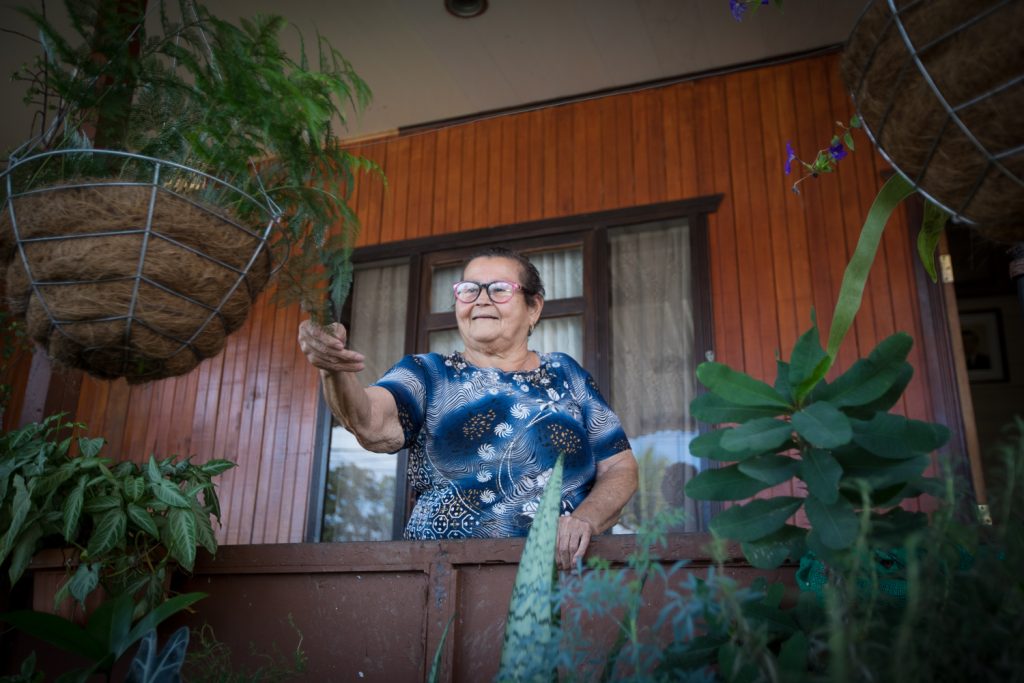
The reality of breast cancer in Costa Rica
According to a report developed by Dr. Alejandro Calderón of the Caja project Strengthening comprehensive cancer care, the incidence of breast cancer in Costa Rican women has increased by 21% between 2000 and 2016 (2016 is the last year in which the National Registry of Tumors of the Ministry of Health presented an official report). The same report indicates that, according to INEC data, mortality from breast cancer has increased by 20% between 2000 and 2021, and that 17% of women who died from cancer in Costa Rica in 2020 had breast cancer.

However, the Caja reported in February of this year that despite the increase in incidence and mortality from breast cancer, Costa Rica is a world leader when it comes to the survival of a patient with this disease. “Costa Rica has the highest net survival in the world among women with breast cancer, with 86.7%, and it is the only country in Latin America that exceeds the average of the Organization for Economic Cooperation and Development (OECD), which is 84.8% and well above the Latin American average of 78.4%,” the report reads.
The success of breast cancer survival in Costa Rica is directly related to its early detection, as we reported in El Colectivo 506 a week ago.
Dr. Maureen explains that the Caja has 61 breast clinics throughout the country, where women who present an altered mammogram are evaluated by trained personnel and then coordinate all additional studies such as ultrasounds, additional mammograms, biopsies, and other procedures that allow medical personnel to diagnose or rule out breast cancer.

“When the patient has confirmed breast cancer, these clinics can direct people to the oncology unit, where they will receive the best possible treatment according to the characteristics of their disease,” she says.
“All women with a positive result are cared for, given a treatment option, and what they need: 100%,” Angie says of the women who have had a mammogram on the ALSALUS mobile mammogram.
María Elena was one of them. And although it took almost two years, and the recovery from the operation that they performed to successfully remove the tumors in her right breast was complicated by an infection, she is still at home today—enjoying those videos that make her laugh.
“Alsalus: Alianza por su Salud” has supported the solutions journalism of El Colectivo 506 related to the issue of cancer in Costa Rica. Read more about the Alliance here..


